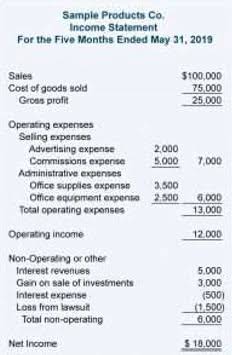
Companies in any industry will look to invest in RPA before considering hiring employees for certain tasks. As humans, we are prone to automating tasks for as long as we’ve been present on this planet. We can always look at the Ancient Greeks or, for instance, Charles Babbage and his invention of the steam-powered calculator in the 1800s as some of the first forms of automation. You must have heard the term Business Process Automation before, perhaps more and more in recent times.

What is Business Process Automation?

This trend generally occurs because businesses aim to refocus employee attention away from any menial tasks that can be performed by AI. The lingo of the different business processing solutions can be confusing, as in essence they are all connected or part of one another. Many RPA solutions are easily installed prebuilt software tools that run on top of existing systems without connecting to databases or accessing application programming interfaces (APIs). BPA solutions are customized for a specific organization, typically integrated into data systems or connected to APIs.
- In this case, new technology options that foster asynchronous communication would make it easier for the team to communicate and reduce the amount of time they spend communicating.
- Identifying fake logins or information requests via an automatism supported by AI can be done more efficiently in case of a mass cyberattack.
- An executive survey performed by McKinsey indicates that the acceleration of digitization and automation at 67% of all companies is propelled by the COVID-19 pandemic.
- Also, AI and machine learning systems can analyze data and look for new approaches that optimize existing workflows.
- A business process is an activity, or set of activities, used to accomplish a specific organizational goal, such as producing a product, assimilating new employees and bringing on new customers.
- Adding this type of solution allows businesses to enable DevOps, simplify compliance, monitor systems, and meet SLAs efficiently.
What is a software robot?
- While BPA and RPA are focused on automating processes and tasks, BPM takes a broader approach.
- For businesses with veterans possessing rich process knowledge, leveraging this method ensures the retention of unique insights, proving invaluable for the entire organization.
- This form of automated planning was extended to more industries in the 1970s and gained new qualities in the 1980s.
- While BPA can streamline workflows and improve organizational performance, no technology is perfect.
- Maximizing the ROI of those applications involves going beyond any basic built-in schedulers they have and integrating each application into an enterprise-wide workflow.
This reduces the need for space to store paper documents and equipment (e.g. storage cabinets). Mistakes are easy to make for even the most punctual and smart employees. Daily repetition almost makes us feel like we bpa business process automation are robots completing a task. Conforming to privacy- and KYC regulations can be quite an exhaustive process for companies. Customers trust companies with their personal details when applying for a specific service.
- So, whether you apply business process analysis tools informally, or you formally audit processes quarterly or annually, it should be a fundamental part of your business function.
- Additionally, synchronization between humans and automated systems can be complex and may require training and cultural adjustment.
- Business process analyses peek behind the scenes of your business operations.
- Errors made in this process can have serious consequences for both the bank and the customer.
- In BPM, business processes are managed collectively to reduce error rates and improve workflow efficiency.
- This level of access creates transparent processes with real-time tracking and provides enhanced accountability.
Why choose Red Hat for automation?
Using RPA software, workers and developers alike can record the rough draft for a simple automation by clicking and scrolling their way through a business process. The various RPA platforms then harden these basic programs so they can’t be changed in the application layouts and workflows. Choosing which business operations to automate begins with analyzing the workplace and identifying tasks that are repetitive and relatively simple tasks/workflows. Business Process Automation aims to use technology and software to automate such tasks, saving time, money, and manpower. Many business process analysis tools are available in the market, each boasting advanced features to enhance your analysis and foster better teamwork. With BPA tools, complex steps are simplified, and processes become more efficient.
No-code platforms are being increasingly adopted in the enterprise world to speed up business processes, as mentioned in the last point. There are also consumer-facing apps, such as IFTTT, which allow anyone to create new workflows, all without the use of code. You need to routinely review and analyze them to determine if they’re still effective. These reviews, or business process analyses, are highly beneficial for your company. Successful business process analyses can generate more revenue, spur growth, and streamline business operations.
Business Analysis

As a result, organisations can reap benefits derived from automating processes. Also, improving employee and customer satisfaction and reducing risk of bottlenecks and delays. The pandemic has motivated leading businesses to combine any means possible to improve their workflow automation by joining all forces currently at play in BPA. While BPM and BPA have similar goals, they have different ways of achieving them. BPM takes a wide view of the organization, while BPA is a strategy to improve specific processes.
